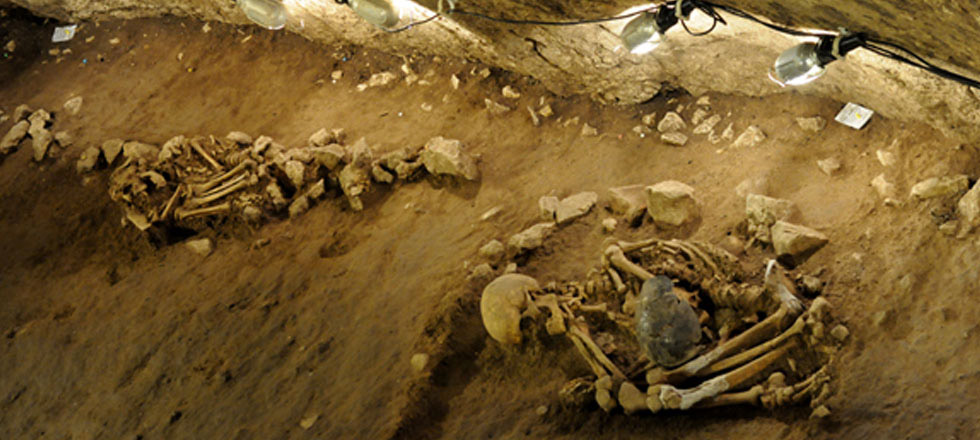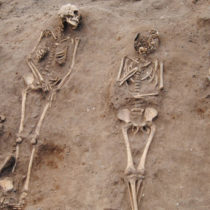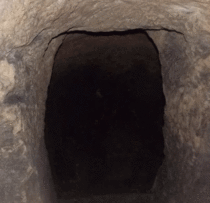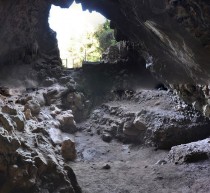Four well preserved human skeletons dated to about 6,400 years ago came to light by Spanish excavations in Can Sadurní cave, in Begues, Barcelona. Archaeologists excavating in 1999, also discovered within the cave evidence for the earliest European beer -in the form of a cup like container in which oxalate and barley-corn phytoliths- which may have been included as part of the death ritual.
The group of four consists of a 50-year-old adult male, a sub-adult, and two children aged 3-4 and 5-6 years old. The four individuals were not buried, but were placed around the north wall of the cave with a one metre gap between each of them.The adult male was accompanied by various burial goods including a two handled drinking vessel and joints of meat from two goats and a calf. Under the left arm, near the elbow, a polished bone pendant was found. Nearby, evidence of a fire, possibly lit as part of the burial ritual was also found.
The bodies lay in a line and were curled up in tight foetal positions resting on their right side with their backs to the north wall of the cave. The rather extreme foetal position indicates that they may have been tied and wrapped in some kind of shroud. A small landslip from the outer part of the cave must have taken place when the bodies had been newly interred, or at least when they had just began the decomposition process, as it has protected them in the position in which they had originally been placed.
Sediment had accumulated over the corpses and later, more bodies were placed over the top, while similar burial rituals were performed over the space of more than two-hundred years at this site. After this, a stronger landslip took place spreading the remains of the last bodies placed there.
*Excavations at Can Sadurní are carried out by Collectiu per la Investigació de la Prehistòria i l’Arqueologia del Garraf-Ordal (CIPAG), together with the Seminar of Studies and Prehistoric Research (SERP) of the University of Barcelona.





